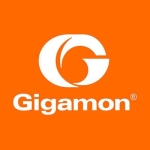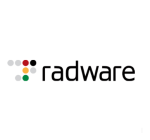What is our primary use case?
There is the Simple WAF and the Advanced WAF. We are currently working on the Advanced WAF, but previously, before the Advanced WAF came out, we were just using the Simple WAF.
We use the on-prem version because the cloud solution is not that popular here.
I have a customer here who has multiple applications dealing with the day to day operations. We have deployed the application firewall in the network and most of their web traffic from outside of their network comes into that WAF. This includes the email application Outlook and their own in-house application tools deployed that they use to sell their merchandise. They have a feature where you can transfer money to the other user based on their mobile phone number. So these web applications and in-house tools are the most used applications in their network.
What is most valuable?
In terms of F5 Advanced WAF's most valuable features, I would definitely say its stability. F5 is one of the most stable products. Either as the load balancer or the web application firewall, it is very stable.
Additionally, the method it uses to block attacks and the logging and support are very good. You can see anything you want in the logging and reporting section of the device, it is very detailed. These are two valuable features from F5.
What needs improvement?
If I had to summarize what needed improvement, I'd say they are currently in the process of updating their software. But more specifically, I would say their graphical interface, the GUI. I don't like the GUI as much as before, but now I think they're focusing on it. We are getting some new good features in the latest update. But there is still room for improvement on the user interface as well. It's easy to use. It's not difficult but it is not pleasing to the eye. Most of the time you want to see something dynamic, something like the reporting section or the system usage, the CPU, some detailed graphs, anything of that sort. So I guess they have some room for improvement there. Don't make it more complicated, just make it more pleasing to the eye.
We are using the most stable version. Because recently we got an email from F5 suggesting that if you have any user on the 14.1.2.0 that there was a vulnerability on that feature. And it was quite a severe one, so they asked us to immediately update that license to another version.
They currently have 15 versions, but they are not stable. They didn't recommend them to us. So most of the customers in Pakistan are using the 14.1.2.6 version. That is the most stable version and is recommended by F5.
My focus is normally on logging and reporting, because customers always ask for a clear reporting criteria. I would like it if they could simplify the reporting process. If I create something, I want to get a good report on it that I can read in seconds or in minutes. I don't want extra details in it. They should work on the exporting of the logging and reporting.
For how long have I used the solution?
I have been using Advanced WAF since it came on the market last year. Advanced WAF is the advanced version of WAF which I have been using for three years.
What do I think about the scalability of the solution?
F5 basically starts their hardware model from a 10GB distribution. So it is a good device to start with and in Pakistan we mostly have up to 40 or 60 gigabytes of devices.
As far as scalability is concerned, we already talked to the customer in detail about what kind of traffic they are expecting in the next five or seven years. Then we decide the box on that data basis and normally we don't have to worry about scaling later.
In terms of adding more features on the F5 hardware, that is a question based on the module. If it takes too much of the CPU, then it is difficult and scaling would be difficult with that hardware. If the hardware is not so many CPU's, then we have to dedicate to each module. Then the scalability becomes a bit difficult. But if you already have hardware that has CPU's in abundance, you can add as many modules as you want. There's no problem.
F5 lets you decide if you want to assign a specific module, a dedicated CPU or nominal resources. You can even decide if you want nominal resources or if you want full resources for that specific module. It all depends on the importance of that module in your business application.
If they are a small company, 250 to 500 employees, or less than 250, then we can go for the virtual Edition of the F5, because as I said, the hardware solution starts from a 10GB box. This can handle thousands of requests per second.
It would be a bit costly for a small scale business. If someone wants F5 and he has less applications and nominal users, he can go for the Virtual Edition. Most of the customers in Pakistan who are using F5 are in the banking sector. They have a good amount of users already, 1500, 3000. So mostly we have banks in Pakistan using F5. And I guess also a few in the education sector and businesses. Otherwise, not many small businesses have F5. The one I mentioned that is using AWAF is a big telecom in Pakistan and they have millions of users. It is not for the very small businesses, I guess.
How are customer service and technical support?
I have had many experiences with customer support, both good and bad. Truthfully, they can improve a bit. There are two methods to engage the F5 support. You either call or email them. It's your choice.
You decide which location you want to call, either the Singapore or UK office, because there is no support in Pakistan. We have to ask for support from either UAE, Singapore, the UK or the US. If I call, I normally prefer to call Singapore, because our region mostly deals with the Singapore head office. Sometimes there's a problem understanding Singaporean language and it's tough to talk to them.
But if you reach out over email, then obviously it is easier. Talking to them on the phone is quite a difficult task. Secondly, if you open a customer request from a portal, we have a customer support portal for the client as well. Normally we get the engineer from UK or Singapore. It also depends on the engineer - sometimes he's very responsive. He will just respond to you in an hour or day. And sometimes you get an engineer who is absent for two, three days and you have to call them and change engineers because the first one is not responding.
In short they have to improve a bit on support.
Which solution did I use previously and why did I switch?
We mostly deal with F5 and we always ask our customers who want the web application firewall to go for F5. We do have other web solutions as well, like Fortinet FortiWeb, another popular solution. For small businesses, we don't suggest that.
We are gold partners with F5, so we always suggest F5.
How was the initial setup?
In terms of the initial setup, for a person who is a bit experienced it is not that difficult. It is a straightforward device. You follow the same principle and the same steps and you are good to go. Just follow the steps. F5 guides you through the initial configuration, which is another of their features. If you don't want to go for the manual config you can just follow their step by step. Press - next, next, next, next then you have the initial configuration done.
Then you can move to your own configuration according to your network and according to your need. It's an easy device to configure, it's not difficult.
Only the graphical user interface needs some kind of improvement to make it more modern. But as far as the straightforward install is concerned, it's good and easy.
One person is enough for the deployment and for the check.
In terms of how long it takes to deploy Advanced WAF, it depends on the number of applications you have to put behind the F5 number one.
The initial network configuration won't take so long if you have all the required data.
You can set up the initial configuration in an hour or two. But the more applications you add will determine the length of the configuration.
We mostly deploy Advanced WAF in automatic mode. We don't do the manual configuration of the security side. We just put application details there and we let F5 decide the learning process. It normally takes 15 to 20 days to get a good grip on the application, the language, and the do's and don'ts. We let F5 decide.
It takes around 15 to 20 days to get it into the blocking mode. But for the configuration for one application it will hardly take 30 minutes to be configured. It all depends on the amount of applications you have.
What other advice do I have?
My advice is that if you need a web application firewall you should go for F5. It is one of the best solutions in the past six or seven years.
F5 has been the leader in this field. It's a stable solution. One just has to decide their organization's goals in the beginning for the next five years or so. Because if they wrongly select the hardware module, they cannot do the scalability if they want to add a number of modules in the future. So selecting the product should be done with great care. Otherwise, I guess it's okay. If you want a good web application firewall go for F5.
On a scale of one to ten, I would rate F5 Advanced WAF a nine.
Which deployment model are you using for this solution?
On-premises
Disclosure: My company has a business relationship with this vendor other than being a customer. Partner

















